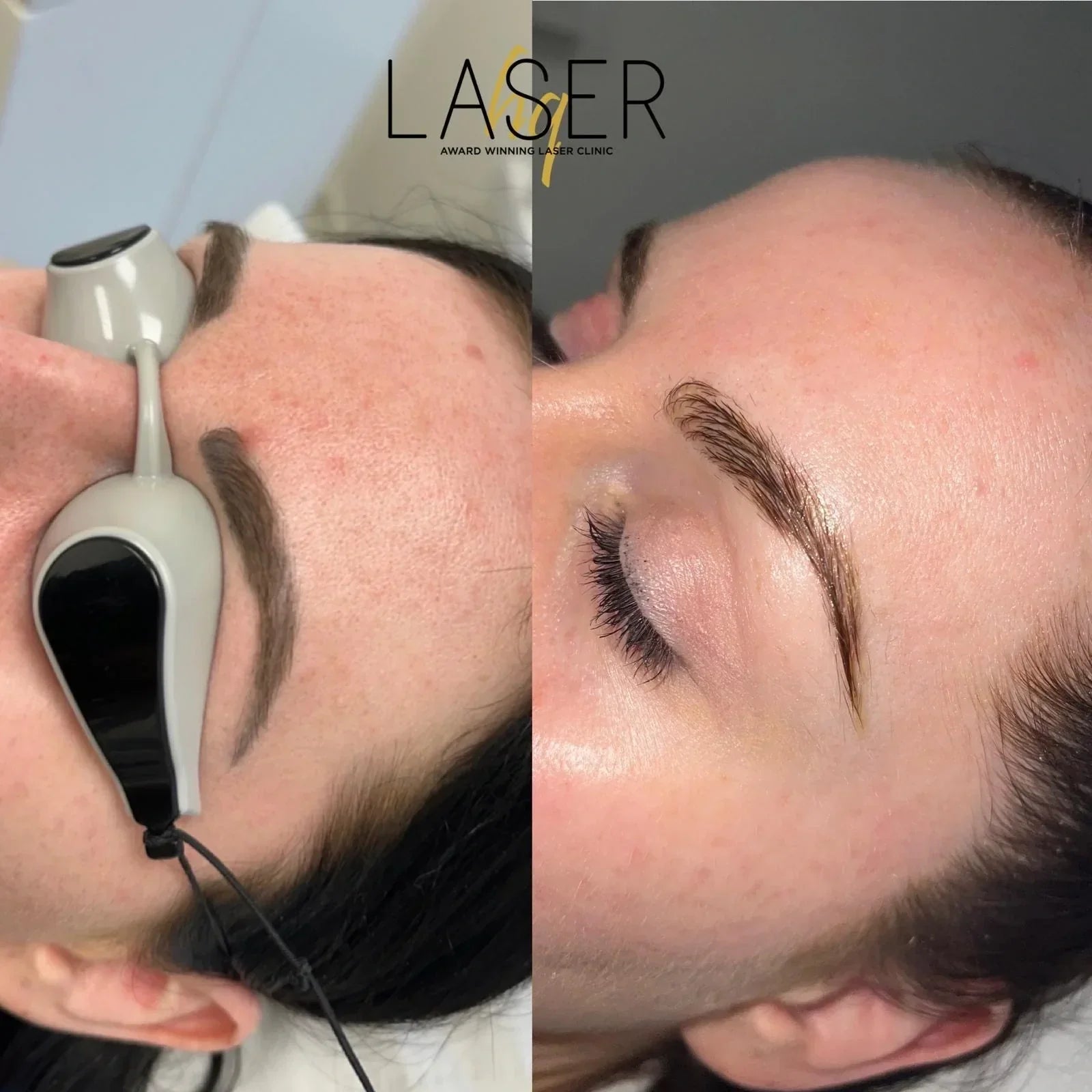Why You Might Want to Remove Semi-Permanent Eyebrows
Microblading is a popular technique where tiny hair-like strokes are etched into the skin using a semi-permanent pigment. While it’s designed to last up to two years, various factors can lead people to opt for removal. Common reasons include:
- Fading or Discoloration: Over time, pigments can fade or shift in color. Some clients find that their brows turn an undesired shade, prompting them to remove them.
- Shape Issues: Perhaps the initial shape doesn’t match your preferences anymore. Your brow design may look too thick, thin, or not in harmony with your natural features.
- Lifestyle or Skin Changes: Changes in your lifestyle, skin type, or age can alter how well your semi-permanent brows hold up, leading you to want a fresh start.
- Regret: Like any beauty treatment, microblading can sometimes lead to regret, especially if it didn’t meet your expectations.
Whatever your reason for removing semi-permanent brows, understanding the proper steps to safely achieve a clean slate is crucial.
The Removal Process: What to Expect
Removing semi-permanent eyebrows requires time, patience, and the right approach. Here’s a step-by-step look at the general process of eyebrow tattoo removal:
- Consultation with a Professional: It’s essential to consult with a certified and experienced therapist before attempting removal. They’ll assess the situation and determine the best method based on your skin type and how deeply the pigment was implanted.
- Laser Removal: One of the most common methods for removing microblading is laser treatment. This involves using a Q-switched laser, which targets the pigment and breaks it down so your body can naturally absorb and eliminate the particles. Sessions typically last between 10-30 minutes depending on the size and color of the area, and you may need multiple sessions to fully remove the pigment.
- Healing Time: After the removal process, your skin will need time to heal. Expect some swelling, redness, and slight scabbing in the treated area. Healing can take anywhere from 7-14 days, and it’s crucial to follow aftercare instructions to avoid infection or scarring.
Why Wait Six Weeks Before Getting Re-Microbladed?
After the removal process, it’s essential to give your skin adequate time to heal before undergoing another round of microblading. Six weeks is generally considered a safe time frame for the following reasons:
- Full Healing: After the removal, your skin may still be healing, and microblading over freshly treated skin can cause further irritation or pigmentation issues. Giving it six weeks allows your skin to fully recover, minimising the risk of complications like infection, scarring, or uneven pigment application.
- Skin Rejuvenation: The healing period allows the skin to restore itself, removing any residual pigment and rejuvenating the surface. Microblading works best on healthy, uninflamed skin, so waiting ensures the area is in the best possible condition for the new treatment.
- Natural Brow Growth: During the six-week healing period, your natural brow hair will begin to grow back, giving your brow technician a more accurate base to work with when shaping and filling your brows for the second treatment.
What to Expect When Getting Your Eyebrows Re-Microbladed After Removal
Once your skin has healed, you can book a re-microblading session. Here’s what to expect:
- Consultation: You will have a consultation with your therapist to discuss the shape, color, and style you desire for your new brows. The technician may take a more detailed approach since you’ve had previous microblading and may want to correct or refine the design.
- Procedure: The therapist will use a tiny blade or a digital machine to create delicate strokes that mimic natural hair. The semi-permanent pigment is implanted into the upper layers of the skin, providing long-lasting results. The pain is generally minimal, as most technicians apply a numbing cream to the area beforehand.
- Aftercare: After your new brows are created, you’ll need to follow aftercare instructions carefully. This may include avoiding moisture, direct sunlight, or heavy makeup for the first few days to allow the pigment to set properly. You may experience some minor swelling and scabbing, but this should subside in a few days.
- Touch-ups: Most microblading sessions require a touch-up appointment after about 6-8 weeks. This ensures that the pigment settles properly and corrects any areas where the pigment may not have taken as well.
Final Thoughts: A Fresh Start for Your Brows
The removal of semi-permanent eyebrows and the opportunity to re-microblade is a process that requires patience, careful planning, and expert technique. Whether you’re seeking to change the shape, correct a color issue, or start fresh after a change of heart, the six-week waiting period gives your skin the necessary time to heal and rejuvenate. Always work with a certified and experienced technician for both removal and re-microblading to ensure the best possible results. With the right approach, you’ll soon have the perfect set of brows that enhance your natural beauty!

These brows have been micro bladed back to natural looking brows by Dominique transformed-by-euphoria.
Dominique says: As a microblading artist it is much more difficult and sometimes not possible to achieve your dream brows when working with existing pigment that is in the skin. By removing old pigment with Laser, prior to new micro blading treatment is the best way to keep your brows looking natural and avoids the pigment being saturated in the skin. Choose your micro blading artist carefully. You should always ask to see their healed results as well as results immediately after.
Click here to book in for a FREE consultation today!


